
DRUG SAFETY
Scope & Guideline
Your Trusted Source for Drug Safety Insights
Introduction
Aims and Scopes
- Pharmacovigilance and Drug Safety Monitoring:
This area covers the systematic collection, analysis, and interpretation of data related to adverse drug reactions (ADRs) and other drug-related problems. It aims to improve safety and efficacy in drug use through ongoing monitoring. - Risk Assessment and Management:
Research focusing on identifying, assessing, and managing risks associated with drug therapies, including the development of frameworks for safer medication use in various populations. - Real-World Evidence and Data Analysis:
Utilizing real-world data sources to analyze drug safety outcomes, effectiveness, and patterns of drug usage. This includes studies using electronic health records and spontaneous reporting systems. - Methodological Innovations in Drug Safety Research:
Development of new methodologies and technologies (e.g., machine learning, big data analytics) for signal detection and causal inference in pharmacovigilance. - Patient-Centric Approaches to Drug Safety:
Research that emphasizes the role of patients in pharmacovigilance, including patient-reported outcomes and experiences related to drug safety. - Special Populations and Vulnerable Groups:
Studies focusing on drug safety in specific populations, such as pregnant women, children, and the elderly, to address unique safety concerns and ensure tailored risk management.
Trending and Emerging
- Integration of Artificial Intelligence and Machine Learning:
There is a growing emphasis on the use of AI and machine learning technologies in pharmacovigilance for signal detection, data analysis, and improving reporting accuracy. - Focus on Vaccine Safety and Monitoring:
Following the COVID-19 pandemic, there has been a significant increase in research related to vaccine safety, particularly regarding the monitoring of adverse events associated with COVID-19 vaccinations. - Patient Engagement and Involvement:
Emerging research emphasizes the importance of involving patients in pharmacovigilance processes, including patient-reported outcomes and experiences, to enhance drug safety practices. - Real-World Data Utilization:
The use of real-world data for evaluating drug safety and efficacy is trending, with studies focusing on how these data can inform regulatory decisions and clinical practice. - Polypharmacy and Drug-Drug Interaction Studies:
Research addressing the complexities of polypharmacy and drug-drug interactions is gaining prominence, reflecting the need to understand safety in patients taking multiple medications. - Ethical Considerations in Pharmacovigilance:
Emerging discussions around the ethical implications of pharmacovigilance practices, particularly regarding data privacy and the responsibilities of stakeholders in drug safety.
Declining or Waning
- Traditional Pharmacovigilance Methods:
There is a noticeable decline in the publication of papers focusing solely on traditional pharmacovigilance methods, as newer technologies and data sources are increasingly prioritized. - General Drug Safety Studies Without Specific Contexts:
Research that lacks a specific context or fails to address contemporary issues in drug safety may be receiving less attention, as the emphasis shifts towards studies that are more relevant to current healthcare challenges. - Single-Agent Drug Studies:
Studies focusing solely on the safety of single agents without considering polypharmacy or drug-drug interactions are becoming less prominent, reflecting a broader understanding of the complexities of real-world medication use. - Pharmacovigilance in Low-Resource Settings:
While still important, the specific focus on pharmacovigilance in low-resource settings may be waning as the journal expands its scope to include more global and comprehensive approaches.
Similar Journals
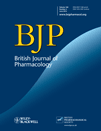
BRITISH JOURNAL OF PHARMACOLOGY
Exploring the frontiers of pharmacology and toxicology.British Journal of Pharmacology is a premier, peer-reviewed journal published by Wiley, specializing in the dynamic field of pharmacology. With a robust impact factor, this journal ranks in the top quartile (Q1) for pharmacology according to the 2023 category rankings, emphasizing its significance and reputation among the global scientific community. As an essential resource for researchers, professionals, and students alike, the journal provides a platform for innovative research spanning foundational studies to clinical applications in pharmacology, toxicology, and pharmaceutics. Since its inception in 1966, the journal has consistently contributed to the advancement of pharmacological science, fostering a deeper understanding of drug action mechanisms and therapeutic advancements. Although primarily subscription-based, the British Journal of Pharmacology is committed to disseminating high-quality research that shapes the future of the field.

Expert Opinion On Drug Safety
Elevating Standards in Pharmacological ResearchExpert Opinion on Drug Safety is a prestigious academic journal dedicated to advancing knowledge in the fields of drug safety and pharmacology. Published by Taylor & Francis Ltd, this journal serves as an essential resource for researchers and professionals seeking to explore the complexities of drug interactions, adverse effects, and risk management. With an impressive impact factor and recognized as a Q1 journal in both the Medicine (Miscellaneous) and Pharmacology (Medical) categories, it ranks favorably at #78 out of 272 in Scopus, placing it in the 71st percentile among its peers. Operating under a rigorous peer-review process, the journal publishes original research, expert reviews, and opinion pieces that contribute to a deeper understanding of drug safety practices. While not an open access journal, it remains a vital platform for disseminating pivotal findings and fostering scholarly dialogue, ensuring that critical insights reach a global audience. With continuous publication from 2002 to 2024, Expert Opinion on Drug Safety is a key reference for anyone involved in pharmaceutical research, healthcare practice, or drug regulation.
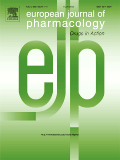
European Journal of Pharmacology
Fostering interdisciplinary collaboration in the realm of pharmacology.The European Journal of Pharmacology, a prestigious publication by Elsevier, serves as a vital resource in the field of pharmacology, offering rich insights into drug development and therapeutic applications. Since its inception in 1967, this journal has evolved to encompass groundbreaking research, including pharmacokinetics, toxicology, and innovative pharmacological methodologies, making it an essential platform for researchers and professionals alike. With an impressive impact factor that places it in the Q1 category of pharmacological journals and a Scopus ranking of #49 out of 313, the journal is recognized in the 84th percentile within its category, solidifying its significance in the academic community. Although the journal is not open access, it continues to attract contributions from leading scientists worldwide, ensuring that cutting-edge findings are disseminated effectively. The European Journal of Pharmacology not only highlights advancements in drug discovery and clinical applications but also promotes interdisciplinary collaboration, ultimately contributing to the progress of healthcare globally.
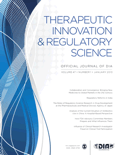
Therapeutic Innovation & Regulatory Science
Navigating the Nexus of Medicine and RegulationTherapeutic Innovation & Regulatory Science, published by Springer Heidelberg, is an esteemed journal that focuses on the intersection of therapeutic innovations and the regulatory frameworks that govern them. Established in 1970 and continuing its legacy of excellence through converged years, this journal plays a crucial role in supplying cutting-edge research, reviews, and discussions that advance understanding in the fields of pharmacology and healthcare regulation. With an impact factor reflective of its rigorous peer-review standards, this journal holds a prestigious Q1 ranking in Pharmacology, Toxicology, and Pharmaceutics (Miscellaneous) for 2023, reflecting its influence and the high quality of its published material. The journal's wide scope also embraces public health and environmental studies, making it an essential resource for researchers and professionals navigating these critical areas. Open access options enhance its visibility and accessibility, ensuring that the latest discoveries and regulatory insights are readily available to a global audience. For those at the forefront of medicinal science and regulatory affairs, Therapeutic Innovation & Regulatory Science is your avenue to understanding pivotal innovations that shape contemporary therapeutic practices.
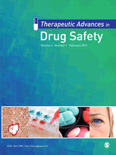
Therapeutic Advances in Drug Safety
Exploring New Horizons in Pharmacological SafetyTherapeutic Advances in Drug Safety is a prestigious open-access journal published by SAGE Publications Ltd that has made significant strides in the field of pharmacology since its inception in 2010. With an impressive impact factor that places it in the Q1 category for Pharmacology (medical), this journal ranks 61st out of 272 in Scopus, showcasing its global influence and commitment to advancing drug safety research. Based in the United Kingdom, it aims to bridge the critical gap between pharmacological innovation and clinical application, offering a platform for the dissemination of groundbreaking research, case studies, and expert reviews. Since adopting an Open Access model in 2019, the journal has significantly increased its reach, ensuring that vital findings in drug safety are accessible to researchers, healthcare professionals, and educators worldwide. As the field of drug safety continues to evolve, Therapeutic Advances in Drug Safety remains an essential resource for those dedicated to enhancing safe therapeutic practices and patient outcomes.

DRUGS & THERAPY PERSPECTIVES
Illuminating the Future of Therapeutic StrategiesDRUGS & THERAPY PERSPECTIVES is an esteemed journal published by SpringerNature, dedicated to advancing knowledge in the field of pharmacology and therapeutic studies. With an ISSN of 1172-0360 and an E-ISSN of 1179-1977, this journal has been providing valuable insights since its inception in 1993 and continues to publish until 2024. Ranked in the Q3 category for Pharmacology (medical) and positioned within the 25th percentile according to Scopus rankings, it serves as a vital resource for researchers, practitioners, and students alike. Although it is not an open-access journal, it offers a comprehensive platform for innovative research, clinical practices, and evolving therapeutic strategies, reflecting the critical developments in drug therapy landscape. With its strategic emphasis on bridging academic studies and clinical applications, DRUGS & THERAPY PERSPECTIVES remains essential for those committed to enhancing drug efficacy and patient outcomes in the ever-evolving medical field.

International Journal of Pharmacology
Exploring the Depths of Drug Actions and InteractionsWelcome to the International Journal of Pharmacology, a key publication in the field of pharmacology, published by ASIAN NETWORK SCIENTIFIC INFORMATION (ANSINET). Since its inception in 2006, this journal has provided a vital platform for researchers and professionals to disseminate their findings and insights in pharmacology, toxicology, and pharmaceutics. Despite recent discontinuation in Scopus coverage, the journal's dedication to fostering scientific dialogue continues to attract contributions from esteemed scholars globally. With an **ISSN of 1811-7775** and **E-ISSN of 1812-5700**, the journal seeks to bridge the gap between laboratory research and clinical application, promoting a deeper understanding of drug actions and interactions. Although it operates under traditional access options, the relevance of its published studies to ongoing pharmacological research remains significant.
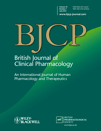
BRITISH JOURNAL OF CLINICAL PHARMACOLOGY
Advancing the Frontiers of Drug TherapyBritish Journal of Clinical Pharmacology, published by Wiley, is a premier peer-reviewed journal that has been at the forefront of pharmacology research since its inception in 1974. Renowned for its high academic rigor, it stands out with an impressive impact factor that places it in the Q1 quartile within both the general pharmacology and medical pharmacology categories. With a Scopus ranking reflecting its esteemed status—ranked #68 out of 272 in medical pharmacology and #109 out of 313 in pharmacology, toxicology, and pharmaceutics—the journal serves as a critical resource for researchers, clinicians, and students who are keen to explore innovations and advancements in drug therapy. The journal's scope encompasses a wide array of topics, including clinical trials, drug safety, and pharmacokinetics, making it an essential platform for disseminating cutting-edge pharmacological findings. Although it does not offer open access, the stringent selection of articles ensures that only the highest-quality research is published, further contributing to the ongoing discourse in clinical pharmacology.
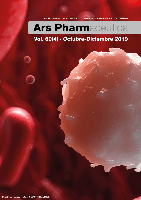
Ars Pharmaceutica
Innovating the intersection of science and the arts.Ars Pharmaceutica is a distinguished open-access journal published by UNIV GRANADA, EDITORIAL, that has been at the forefront of pharmaceutical sciences since its establishment. With ISSN 0004-2927 and E-ISSN 2340-9894, this journal aims to disseminate high-quality research in pharmacology, toxicology, and pharmaceutics, contributing to the advancement of the field. With a historical scope that spans from 1980 to 2017, it has played a pivotal role in shaping the discourse surrounding pharmaceutical science and its intersection with the arts and humanities. Although currently ranked within the 13th percentile in Scopus for Pharmaceutical Science and the 11th percentile for History and Philosophy of Science, Ars Pharmaceutica continues to uphold its commitment to academic excellence and innovation. By providing a platform for open-access research, it encourages collaboration and knowledge sharing among researchers, professionals, and students, thus enhancing the broader understanding of pharmaceutical developments and their societal implications.
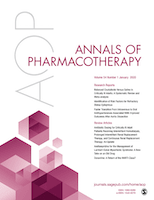
ANNALS OF PHARMACOTHERAPY
Unveiling the Future of Pharmacological ResearchANNALS OF PHARMACOTHERAPY, published by SAGE PUBLICATIONS INC, is a leading journal in the realm of pharmacology and therapeutic science, dedicated to advancing research, clinical practice, and education in the field of medicine. With a solid history dating back to its first publication in 1981, this journal offers a platform for high-quality research articles that explore the latest innovations and methodologies in pharmacotherapy. Although it operates under a subscription-based model, the journal maintains a robust academic reputation, reflected in its Scopus ranking in the 68th percentile within the category of Medicine - Pharmacology (Rank #85/272). The impact factor is continually evolving, as is the scope, which encompasses a diverse range of topics from clinical trials to the therapeutic applications of newly-developed drugs. Researchers, professionals, and students alike will find valuable insights and cutting-edge research in the ANNALS OF PHARMACOTHERAPY, making it an essential resource for anyone engaged in the field of pharmacology.